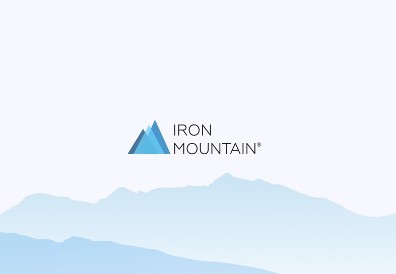Keeping up with records management trends
Keeping up with records management trends is essential in the digital age. Find out what trends you need to be mindful of for the future.

Many of us have not stepped foot in our offices for 2 years. It’s amazing to think about all the file cabinets full of paper that we left behind (along with shoes, umbrellas, and coffee mugs) that we haven’t needed, or missed, in all the intervening months. As we return to our workspaces, now is the time to question if we still see value in the contents of those file cabinets.
Let’s declare the days of a “keep everything culture” over! Consider these 9 tips for how you can take this opportunity for compliant “spring cleaning” to foster a newer, fresher way of working.
If your organisation is getting ready to head back into the office, here are a few of our top tips to help you get a fresh start.
Many of us have not stepped foot in our offices for 2 years. It’s amazing to think about all the file cabinets full of paper that we left behind (along with shoes, umbrellas, and coffee mugs) that we haven’t needed, or missed, in all the intervening months. As we return to our workspaces, now is the time to question if we still see value in the contents of those file cabinets.
Let’s declare the days of a “keep everything culture” over! Consider these 9 tips for how you can take this opportunity for compliant “spring cleaning” to foster a newer, fresher way of working.
Tip 1: Approach your office space with a new frame of mind
The way you work is predominantly more digital, so reassess the mindset, or workflow, that prompted you to store paper in your work area. Consider new policies for hybrid/remote work options and how your space will be optimised to accommodate more flexible ways of working.
Tip 2: Develop a strategy for tackling your file drawers and cabinets
You’ll need to approach official records differently from non-official ones. Make sure your Records and Information Management (RIM) rep and your manager approve of your methodology. And you may want to engage with your Real Estate team to understand their plans for the space.
Tip 3: Weed out non-records that you’ve kept “just in case”
It’s easiest to start with the “containers” that are used for non-records such as reference materials, convenience copies, and drafts before tackling those with official records. Refer to your RIM policy to determine how to dispose of these documents.
Tip 4: Review official business records to determine retention requirements
Evaluate your remaining official records to decide if they need to be retained any longer per your Records Retention Schedule. Consult your RIM rep if you have any questions about this step. If the records are eligible for destruction, follow your RIM policy. There may be instances when they could be imaged, anonymised, and used for data analysis purposes. Check with your RIM rep if unsure.
Tip 5: Take the opportunity to decide what can be digitised
Records that have not met their retention requirement must be kept for as long as indicated in your Records Retention Schedule. Now may be the time to digitise them for easier access in a hybrid, flexible work environment, as well as for potential use in ML/AI initiatives. Consult your RIM rep to determine if the paper can be securely destroyed once imaged, which is most often the case.
Tip 6: Decide what can be boxed and stored offsite
If not imaged, box the records and send them to offsite storage with proper metadata for future management. Again, if you haven’t accessed the records in 2 years, why let them continue to take up space in your office? Think: fresh start!
Tip 7: Take inventory of unused IT equipment
Don’t forget the IT assets and mobile devices that have been collecting dust and should be gotten rid of in a secure and sustainable way. They may still contain private and sensitive information, including intellectual property, so collaborate with your IT team to understand how company and employee IT assets will be securely wiped before being recycled, remarketed, or destroyed.
Tip 8: Share your success with others
Communicate with real estate and facility management colleagues about planning workplace changes. As you note opportunities for improvement and start to see progress in your efforts, share what you learn. Many other organisations are in a similar situation, so you can be an inspiration for change.
Tip 9: Don’t do it alone!
As you start to plan for an office refresh, partner with your real estate team to manage the secure clean out and movement of information and assets. And consider working with other partners and vendors who can help you on this journey.
If you’re ready for a fresh start, we have teams and tools to support your clean-up project.
Related resources
View More Resources

